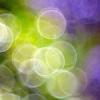-
Posts
88 -
Joined
-
Last visited
Content Type
Profiles
Forums
Articles
Posts posted by septemberdawn
-
-
Timelapse......hmmm.
I like the surreal aspect where the background is constant but there appears to be a tiny universe of activity taking place inside the glass.
If the surface of the liquid were used as a type of projection screen, a distinct, but subtle, reflection.....like clouds moving or the motion reflected from an LCD might make it even more interesting.
-
The 50D uses CF cards:
http://***URL removed***/news/2008/8/26/canoneos50d (scroll down to 'Storage' specifications)
-
-
-
Here is shot I did of Lechmere T-Station in Cambridge, MA. Not as sharp as i wanted because i had to shoot through dirty glass, but i got the exposure i wanted...thanks to RAW and Resolve.
Good detail in the foreground reflections.
Is that a person with a red pullover in the foreground (near the three puddles)?
The car picking up the pedestrian doesn't have its headlights on (even after emerging from under the trainline)....hmmm...mysterious. The driver does, however, get full marks for their use of the indicator.
I detect some dropped frames which may be a result of the streaming and full screen playback.
I took a dozen shots of flowers blowing in the breeze. Suffice to say, It all turned out as garbage.
Now I'm even more curious. Were they close-ups, macro or was the light just not right?
At the end of the shoot, I took one shot of my dog, as a throwaway, and it ended up a keeper.
Your dog looks like a miniature lion.
-
Rather impressive!
-
A quick peek. (view fullscreen)
http://johnbrawley.wordpress.com/2013/04/24/footage-in-your-pocket/
.............................................
Just noticed the 'heads up' was also posted here:
http://www.eoshd.com/comments/topic/2591-blackmagic-pocket-cc-footage-quickdirty-by-brawley/
-
What's the front thread, on both 8/19/1.5x and 16/32/1.5x ?
The 8/19/1.5x has a 39mm front filter thread.
-
I'm still in the process of deciding which Cosina Voigtlander to buy, 17 or 25mm for use on the BMD Pocket Camera. I'd like to go with the 17mm; but in addition to that I also require a lens to be used combination with a Bolex 8/19/1.5x anamorphic. Would the 25mm fit the latter scenario?
A present, I do not own any MFT lenses and would like to start my collection with something rather special.
-
...snip... this is my entry for a competition at a local tv channel. the shigascope with a takumar taking lens on a Nikon V1.
Nicely done and congrats!
When cutting between a few of the shots where the 'talent' were positioned in front of the same background there was a visible 'jolt' (background shift); this may have been intentional; however, if you were to place a marker (usually a cross of tape) to indicate where you want the talent to stand, such 'jolts' could be avoided. The use of this technique is also applicable when dealing with moving subjects and predetermined focus pull.
-
I hope you left the seller good feedback? It is a superb lens, especially with the inclusion of the Redstan components.
-
-
There are some nice cheap cine zooms out there, something like a 2/18-90mm would be perfect
Could you point me to some?
-
Bolex 8/19/1.5x rear element is 20mmhow far off is the sensor from nikon v1's cx?
and how does the bolex rear measure?
a couple of anamorphics i have might be similar in size so i could try it out on the nikon v1 if you want. -
Words of wisdom. Appreciated!
-
Good information.
I'm intending to use a similar configuration.
-
Followup post was a repeat of the initial post.
-
I have recently streamlined my anamorphic lens collection but intend to keep a Bolex-Anamorphot 8/19/1.5x.
I currently have a Tokina 0.4 diopter and would like to know if this would have applicable advantages when used with the Bolex-Anamorphot?
The Tokina 0.4 is a gorgeous piece of glass and I am reluctant to part with it.
I do intend to explore the matter further myself but was after some opinions in the meantime.....
-
-
I was pleasantly surprised to find this documentary broadcast on SBS Television Australia.....at first I did not know anything about the production.....and then I found myself immersed in the content and Mark Cousins' presentation.......it runs for 15 hours :)
In the unlikely event you've not heard about this extraordinary documentary here is a link to the trailer.
- adetrybed and BydrodoFieddy
-
 2
2
-
If you perform a Google search for "gh2 time lapse" you will find many interesting links to follow.
-
Side by Side
In: Cameras
I've just finished watching a documentary titled 'Side by Side' on ABC TV Australia and can highly recommend it for general viewing. There is much the new and current generation can learn from the way aspects of film making were accomplished in times past and up to the present date..... It contains fascinating insights and leaves one with a sense of responsibility as we move further along the timeline and into the future.
Some initial information at link below:
-
The Bolex 1.5x requires both lenses to be focused, though, right?
Yes; but it's uncomplicated.
-
Alas, I'm still looking for the perfect solution that allows me to get the rear element close, and clamped.
Thumbs up on the Redstan clamp.
The retaining ring threads onto the Bolex. The thumb screws on the outer ring lock the retaining ring in place and also facilitate precise orientation of the anamorphic.
I've posted these images before........but seems relevant to post them again...









Phase One Capture One 7 and Cinema DNG
In: Cameras
Posted
I received this in a newsletter less than 24hrs ago:
More information here